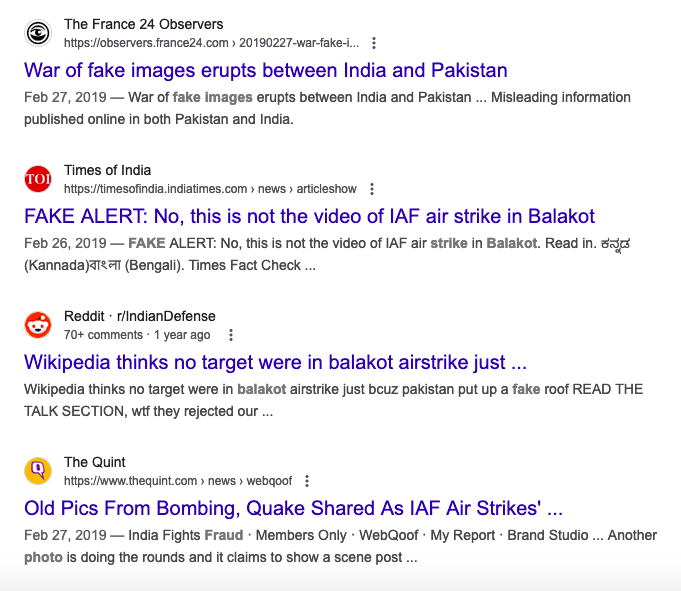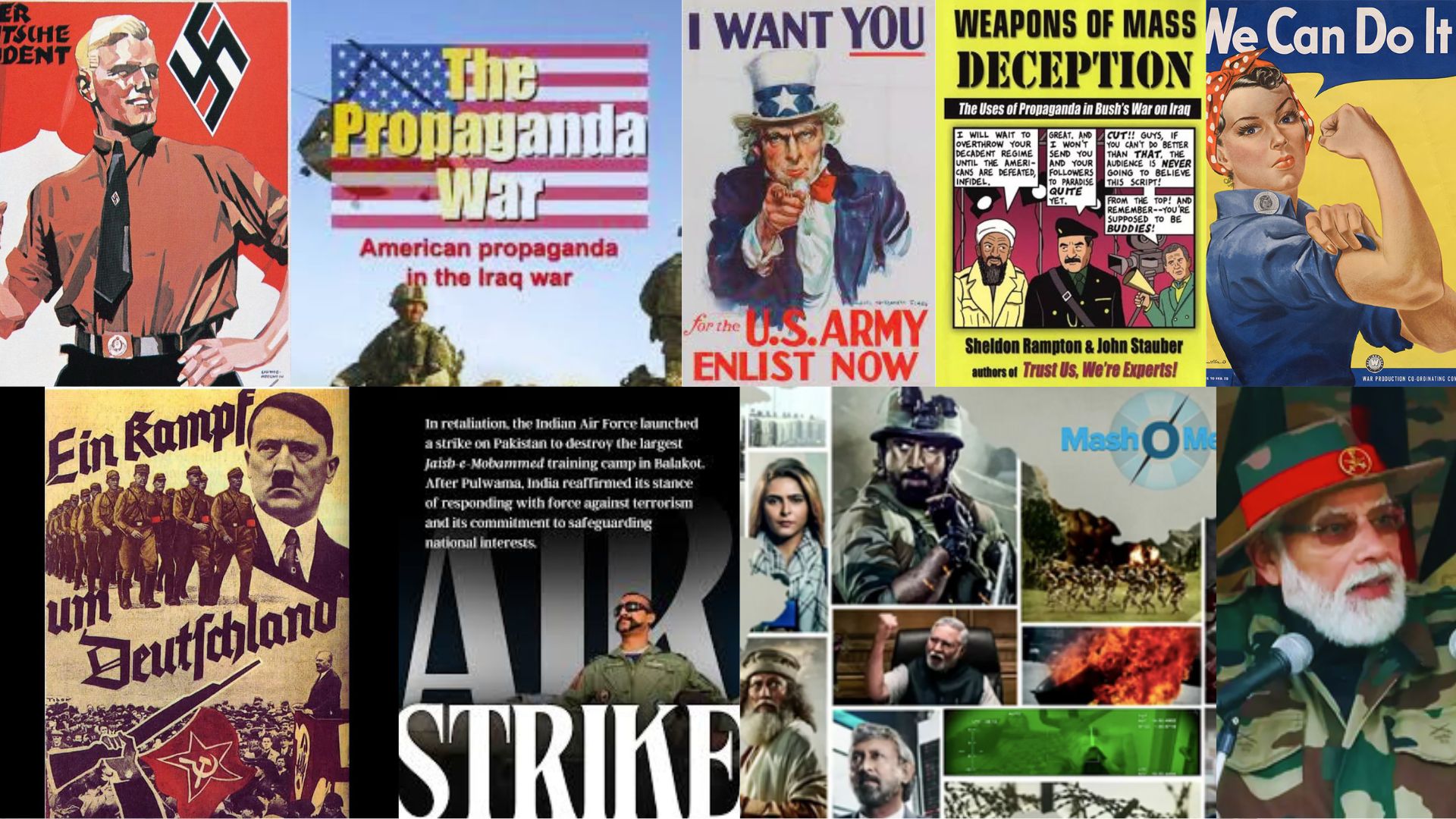Propaganda is a powerful weapon in any war. It helps people believe in the cause, keeps spirits high, and turns the enemy into a villain. It also helps governments get support at home and convince the world they’re doing the right thing.
Here’s how it works, with some real examples from history:
1. Getting People to Join the Fight
Propaganda is often used to get people to join the military or support the war in other ways.
Example:
In World War I, posters like “Lord Kitchener Wants You” in the UK and “Uncle Sam Wants YOU” in the U.S. encouraged men to enlist. They appealed to patriotism and made joining seem like a proud duty.
2. Painting the Enemy as Evil
To build support, propaganda often shows the enemy as dangerous or inhuman.
Example:
In World War II, the Nazis used propaganda to blame Jews and Slavs for Germany’s problems. The Allies also used propaganda, showing leaders like Hitler as crazy and cruel, to bring people together against a common enemy.
3. Lifting People’s Spirits
During tough times, propaganda helps people stay hopeful and focused.
Example:
During World War II, Britain used the slogan “Keep Calm and Carry On.” Speeches by Winston Churchill also reminded people to stay strong during the Blitz, when cities were being bombed.
4. Controlling the Story
Governments use propaganda to shape how the public sees the war. They talk about wins and stay quiet about losses.
Example:
During the Cold War, the Soviet Union used media to show itself as peaceful and powerful, while calling the U.S. aggressive. This helped the government keep support at home.
5. Shaking the Enemy’s Confidence
Propaganda can also be used to confuse or scare enemy troops and civilians.
Example:
During the Vietnam War, the U.S. dropped leaflets offering safe passage to Viet Cong fighters who surrendered. Some did. It created doubt and tension inside the enemy ranks.
6. Making War Seem Necessary
Propaganda helps explain why a war is needed — even if the reason isn’t fully true.
Example:
In 2003, the U.S. said Iraq had weapons of mass destruction and links to terrorism. This convinced many Americans and lawmakers to support the war. Later, those claims were proven false.
UPDATE : 6 MAY 2025
Case Study: India’s Use of Propaganda in the 2019 Pulwama-Balakot Crisis
1. Introduction
Propaganda has long been a strategic tool employed during conflict to control narratives, mobilize public opinion, and justify military actions. In South Asia, the 2019 Pulwama-Balakot episode between India and Pakistan serves as a modern example of how propaganda can be employed to frame national discourse, justify war-like postures, and manufacture political capital. This case study examines India’s use of propaganda during and after the Pulwama attack and the Balakot airstrike, analyzing its objectives, methods, and outcomes.
2. Background
On February 14, 2019, a suicide bomber targeted a convoy of Indian paramilitary forces in Pulwama, Indian-administered Kashmir, killing over 40 personnel. The Pakistan-based militant group Jaish-e-Mohammed (JeM) claimed responsibility. In response, India carried out an airstrike on February 26, targeting what it claimed was a JeM training camp in Balakot, Pakistan. This marked the first aerial bombing by one nuclear power against another since 1971.
3. Objectives of Indian Propaganda
- Justify Military Action: Frame the airstrikes as a defensive, pre-emptive action against terrorism.
- Demonstrate Strength: Portray India as a decisive military power capable of retaliatory strikes across borders.
- Influence Domestic Politics: Reinforce the image of the ruling Bharatiya Janata Party (BJP) and Prime Minister Narendra Modi as strong leaders, particularly in the lead-up to the 2019 general elections.
- Suppress Counter-Narratives: Undermine domestic and international criticism or skepticism by controlling the media narrative.
4. Propaganda Strategies Employed
4.1 Inflated Claims of Success
Indian officials and media outlets initially claimed that the Balakot airstrike killed over 300 terrorists. However, no independent or satellite evidence substantiated these numbers. Foreign journalists and satellite imagery later indicated that the targeted site suffered minimal damage, and Pakistan reported no casualties.

4.2 Media Orchestration and Nationalist Rhetoric
Mainstream Indian television networks ran near-continuous coverage praising the airstrike, using slogans like “India Strikes Back” and “Terror Camps Destroyed.” These messages were uncritically repeated across platforms, creating an echo chamber that reinforced the government’s narrative.
4.3 Digital and Social Media Warfare
Pro-government influencers and bot networks amplified hashtags such as #SurgicalStrike2 and #BalakotStrikes, circulating doctored images, fake videos, and emotionally charged content. This campaign helped build a digital consensus supporting the government’s version of events.
4.4 Reframing Setbacks as Victories
When Pakistan retaliated and shot down an Indian MiG-21, capturing pilot Abhinandan Varthaman, Indian media initially downplayed the event. Upon his release, his return was framed as a diplomatic victory for India, diverting attention from the aerial loss.
4.5 Election Campaign Integration
The timing of the incident played directly into BJP’s campaign narrative. Modi and other leaders frequently referenced the airstrike in speeches, using the events to bolster their image as protectors of national security. The propaganda narrative was deeply woven into campaign material.
5. Outcomes
- Domestic Approval: The BJP won the 2019 general elections with a larger mandate, buoyed in part by a nationalist wave stemming from the Pulwama-Balakot events.
- International Skepticism: Foreign governments and media remained cautious or doubtful about the claims of casualties, highlighting the lack of transparent evidence.
- Escalation of Indo-Pak Tensions: The propaganda contributed to heightened nationalism and jingoism, increasing the risk of future miscalculations in a nuclear environment.
6. Analysis and Implications
India’s propaganda campaign in 2019 exemplifies how modern democracies can manipulate information to serve political ends under the guise of national security. The case illustrates the power of a coordinated media ecosystem—both traditional and digital—in shaping public perception. It also raises ethical concerns about misinformation, accountability, and the potential consequences of militarized propaganda in volatile regions.
7. Conclusion
The 2019 Pulwama-Balakot crisis is a textbook example of successful wartime propaganda achieving short-term political gains at the cost of long-term regional stability and international credibility. It underscores the need for critical media literacy and independent verification in conflict reporting, particularly in nuclear-armed regions.
Founder Asim Qureshi’s Post On X
References
Satellite imagery analyses by Reuters and The New York Times
Reports from BBC, Al Jazeera, and The Guardian
Indian Ministry of External Affairs briefings
Election Commission of India data, 2019
Final Thoughts
Propaganda in war doesn’t fight with guns, but it can be just as powerful. It helps control what people believe and how they feel. When used well, it can unite a country, weaken the enemy, and win support around the world — even if the facts don’t always hold up.
- Propaganda in War : The Powerful Force Multiplier - May 5, 2025
- Disinformation Campaigns as National Security Threats - August 13, 2024
- Global Security Threats An Overview - August 6, 2024



Great blog post, love how you relate it with the Indian Propaganda case study. Makes so much sense.
YES I AGREE with this “The 2019 Pulwama-Balakot crisis is a textbook example of successful wartime propaganda achieving short-term political gains at the cost of long-term regional stability and international credibility.”
So true “Propaganda in war doesn’t fight with guns, but it can be just as powerful.”
Thanks for sharing the post on X also I saw. You guys make such boring stuff worth the read.
India’s propaganda campaign in 2019 exemplifies how modern democracies can manipulate information to serve political ends under the guise of national security.